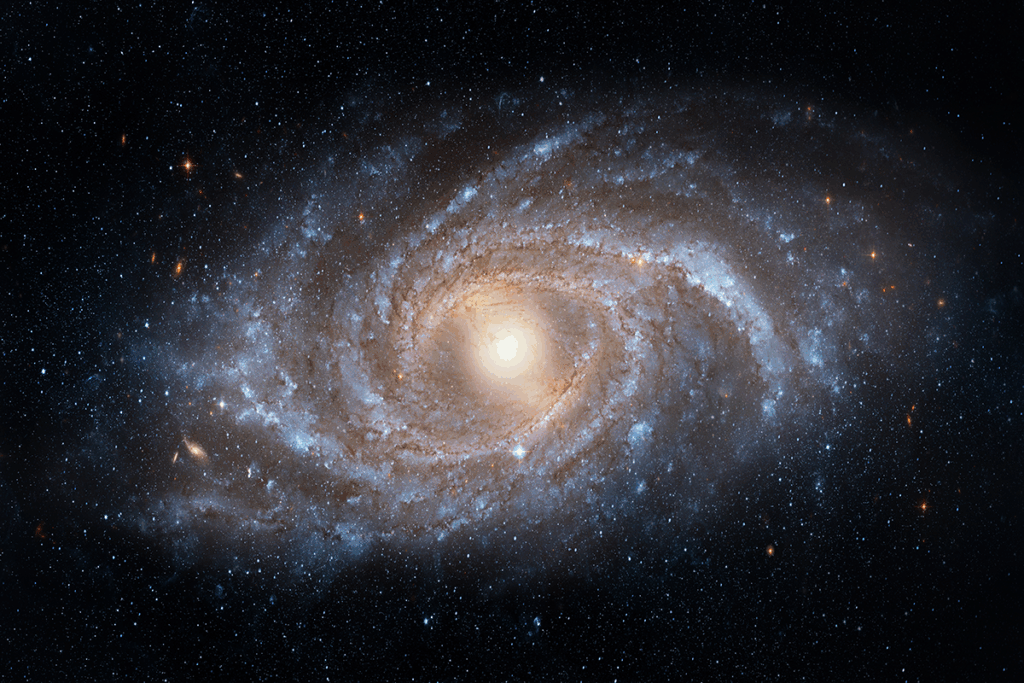College of Sciences Researcher Partners with Planetary Science Institute to Publish First Comprehensive Book on Centaurs
The new publication aims to shape the next decade of planetary science research.
Written by: Emily Dougherty | Published: August 27, 2025

Maria Womack, a planetary scientist with the Department of Physics and the Planetary Science Institute (PSI) is part of a team that’s publishing the first-ever book entirely focused on one of the solar system’s most understudied inhabitants: Centaurs.
The book, Centaurs, was co-edited with PSI researchers Kathryn Volk and Jordan Steckloff as part of the IOP Astronomy series in partnership with the American Astronomical Society, bringing together decades of research.

Centaurs are small icy bodies that orbit the Sun between Jupiter and Neptune. Despite their scientific value as a bridge between trans-Neptunian objects (TNO) and inner solar system comets, they have not received much scientific attention.
“Centaurs have been relatively under-studied compared to other small body populations,” Volk says. “These objects are super important to understanding the transformation of cold, primordial TNOs into the much more physically processed Jupiter family comets.”
Centaurs have been a longtime research focus for Womack. Early in her career, she began investigating comet-like activity in Centaurs at large distances from the Sun.
“I was fascinated by the fact that many Centaurs behave like comets at such large distances from the Sun where it is too cold for outgassing of water, the normal trigger for comet activity to occur,” Womack says. “This prompted me to look for other sources of the mysterious comae, such as carbon monoxide.”
According to a press release from PSI, the book’s publication comes at a crucial time as the most recent National Academies’ Planetary Science Decadal Survey identified a Centaur orbiter and lander as a top community recommendation.
“Such a mission is critical to fully understanding how Centaurs evolve and what drives their physical evolution,” Volk says. “It’s impossible to know exactly what surprises a new mission could reveal, but this kind of data would provide critical context for the data we already have from comet and TNO missions.”
Volk and Womack were invited by IOP to write separate books on the theory and observations of Centaurs . Rather than produce separate books, the pair teamed up with Steckloff and wrote one comprehensive reference for the field. Working as a team, they wrote two chapters and curated and edited contributions from many researchers around the world.

with UCF’s Planetary Sciences Group and co-editor of Centaurs.
UCF’s impact on the book went beyond editorial leadership. Womack says in 2019 she co-organized a three-day Centaur workshop on campus, bringing together more than 60 researchers in person and online. The event led to a list of high priority questions that helped to shape the final book. Among the group were UCF researchers Estela Fernandez-Valenzuela, Julie Brisset, Ana Carolina Souza-Feliciano and Yanga Fernandez, who also co-authored chapters, strengthening UCF’s role in the publication.
The book covers an array of topics which include Centaur formation, orbital dynamics, chemical compositions, and potential for spacecraft missions, as well as a concluding chapter that identifies key questions for the future.
Womack says the recent publication can be a good starting point for Knights who plan to pursue a career in planetary science to learn about the basics of Centaurs.
“This book is the only reference book for studying Centaurs in-depth,” Womack says. “The writing is geared toward graduate students and well-prepared undergraduates who could use this to learn the basics of solar system formation, evolution and how Centaurs contribute to that knowledge.”
